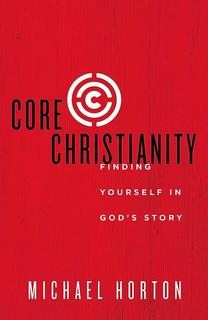(Part 3 of a Four-Part Series)
The different genres [of the Bible] are bound together not simply by a unified plot, but by a unified canon. Scripture is rightly divided between Old and New Testaments, because each has its own constitution around which all of the various writings fit.
Other nations had the gods as witnesses. Only in Israel, however, was the deity also the head of state—the emperor or “Great King.” Many ancient Near Eastern treaties display common features: (1) a preamble, identifying the great king who is imposing the treaty on the lesser nation; (2) the historical prologue justifying his right as sovereign maker and enforcer of the treaty; (3) the stipulations governing the servant nation; and (4) sanctions—the specific benefits for loyalty and judgments for disloyalty. Finally, a copy of the treaty would be deposited in the shrine or archive of the suzerain and the vassal. The Old Testament displays these characteristics.
First, there is the covenant with Adam in the Garden with the preamble (“In the beginning God…”); the historical prologue, justifying God’s sovereignty over creation, including humanity; and the command, along with the warning for disobedience. Then there is the promise to Adam and Eve of a Savior.
Second, there is the historical narrative that justifies Yahweh’s sovereignty over Israel, specifically. It leads from Abraham to Isaac, Jacob, and Joseph, with the promise of a new exodus. God will bring his people back to this land that God swore to Abraham and establish them as his holy nation.
Third, jumping to Deuteronomy, we have the constitution that forms the core of “the law.” It spreads back into Exodus and forward into Leviticus. The wisdom literature displays the universality of God’s moral law. Although Israel has been given a specific constitution, with laws that mark it off from every other nation, the core of that law reflects the moral fabric of the world that God has made, which is summarized in the Ten Commandments.
Fourth, the Psalms are the hymnal in which we have the songs that emerged from this story of Israel. The worship commanded in Leviticus is assumed in these songs. So too are the promises that transcend the era of the Sinai law, looking forward to the greater Son of David.
Fifth, the prophets are God’s covenant lawyers bringing his suit against Israel. They invoke the sanctions: curses for transgression and exile from God’s holy land.
Nevertheless, the Abrahamic covenant of grace has not been set aside by Israel’s failure, because it is not based on the people’s oath that they swore at Sinai. Rather, it is an everlasting covenant that depends exclusively on God’s faithfulness in sending his appointed Messiah. Prophecy and apocalyptic swirl together in the prophetic books, because “eye has not seen nor ear heard what God has prepared for those who love him” (1 Cor. 2:9). Only these genres will do, because they give us intimations, sudden insights, snapshots, and the strange strains of songs from a faraway place.
The same pattern is discerned in the New Testament. In broad terms, the Gospels give us the preamble and historical prologue, the Epistles give us the doctrines and commands that arise from this drama, and the book of Revelation is God’s prosecution of his lawsuit against the oppressors of his people and the promise of the new creation. The sanctions unfold: it is the Last Judgment.
So we not only have to see the one plot unfolding from Genesis to Revelation, as if it were one historical narrative, but we have to see how Israel’s story—the old covenant rooted in Sinai—is, like Hamlet’s play-within-a-play, distinct from the Abrahamic promise that also unfurls its banner throughout the otherwise depressing episodes of Israel’s defiance. We have to see how Proverbs serves as a testimony to the universality of the moral code at the heart of Israel’s covenant, how the Psalms form the hymnal of covenant worship.
We have to recognize the distinct lines of the Sinai covenant, so that we see the gospel in the Old Testament and do not confuse the unique stipulations and sanctions of the Sinai treaty with those of the Abrahamic promise. So now we read the commands even in the Epistles from Zion, not Sinai. They are not conditions for “long life in the land,” but what Paul calls “the reasonable service” that we are to offer “in view of the mercies of God” (Rom. 12:1).
Part 2: The Bible Is More Like a Library Than a Book
Part 4: The Bible Is Not a Code Book
Adapted from Michael Horton, “How to Read the Book,” Modern Reformation, November/December 2013. Used by permission.






